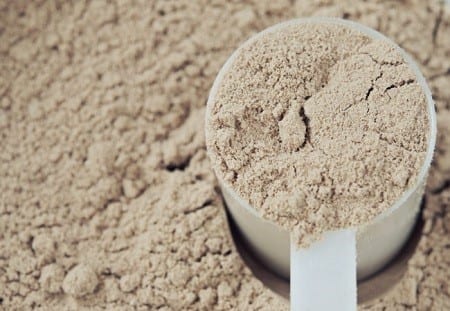Tailor your use for weight loss, muscle growth, wellness
Protein powders are a quick way to help ensure that your body is nourished and satisfied. People use them for a variety of reasons — to lose weight, to improve sports performance and build muscle mass, and for overall wellness.
How do you know which protein powder is best to meet your personal health goals? It’s important to know the difference between available protein powders as well as how they stack up against whole food protein sources.
Whole foods vs. protein powder
You can meet your body’s daily protein requirements whether you drink shakes or eat only whole foods. However, they don’t offer equal nutrition.
What you may find surprising is that shakes generally contain fewer nutrients than whole foods. For that reason, shakes may help you lose weight, but whole foods can offer a bigger nutritional punch.
Protein types and uses
Whey protein is one of the most commonly used proteins and is best for day-to-day use. It contains all of the essential amino acids and is easily digested. It helps boost energy and can reduce stress levels. Whey isolates and concentrates are best to use after a workout.
Soy protein is another common choice. It helps reduce high cholesterol and can ease symptoms of menopause for some women. It can also help with osteoporosis by helping build bone mass.
Other types of protein include:
- Egg protein, released more slowly than whey, can be taken throughout the day.
- Milk proteins help support immune function and enhance muscle growth.
- Rice protein, which is 100 percent plant-based, is a good choice for vegetarians or for people who don’t consume dairy products. It’s also gluten-free.
- Pea protein is highly digestible, hypo-allergenic and economical.
- Hemp protein is also 100 percent plant-based. It’s a good source of omega-3 fatty acids.
Matching a powder to your needs
With so many choices, how do you decide which protein powder is best for you? Here are some general guidelines, based on the outcomes you’re looking for:
- Build muscles — For muscle growth, choose a protein powder with a high biological value (a value that measures how well the body can absorb and utilize a protein). Whey protein and whey isolates are your best options.
- Lose weight — To lose weight, choose shakes with no added sugars or dextrins/maltodextrins (sweeteners made from starch). Don’t choose those with added branched-chain amino acids (BCAAs), as they help promote muscle growth and weight gain.
- Stay vegetarian or vegan — If you are vegetarian or vegan, don’t choose milk-based protein shakes (e.g., whey, milk proteins); instead use 100 percent plant proteins.
- Go low-sugar with diabetes — Patients who have diabetes should choose protein shakes without added sugar (don’t choose protein powders with sugar listed as one of the first three ingredients). It’s also best to look for a shake that’s low in carbohydrates (less than 5 grams per serving).
- Limit protein for kidney disease — People with kidney disease can’t tolerate a lot of protein at one time. Stick with powders that have a lower-range protein content (10-15 grams per serving).
- Avoid gastrointestinal problems — Patients with irritable bowel syndrome or lactose intolerance should choose powders that don’t contain lactose sugars, artificial sweeteners or dextrins/maltodextrins. If you have a gluten allergy or sensitivity, don’t choose powders that contain gluten.
- Stick to your budget — To save money, buy tubs of protein powder instead of ready-to-drink protein shakes which are more expensive because they’re convenient.
Get the most from your protein powder
Here are a few things to consider:
- To recover after exercise, an athlete or avid exerciser should consume protein within 60 minutes of a workout. That’s when your muscles are most responsive to the use of protein for the repair and growth process.
- To control your weight, it’s best to consume a steady supply of protein at each meal and snack to help keep you full.
Although there’s no magic number for how much protein to consume at one time, it’s best to aim for at least 3 ounces of protein per meal.
Boost the taste of your shakes
Each protein powder has a unique taste, depending on the ingredients and protein source. A lot of companies use fillers or flavor enhancers designed by food scientists to create flavors beyond the standard vanilla, chocolate and strawberry.
To improve the taste of the protein shakes you make, mix your protein powders with milk or a milk alternative (as opposed to water) to produce a creamier milkshake-like texture.
Create your own flavor enhancers by mixing in one serving of fruit or even a tablespoon of peanut butter.


